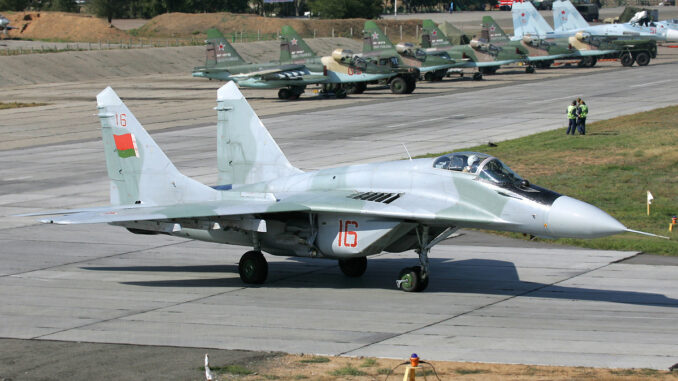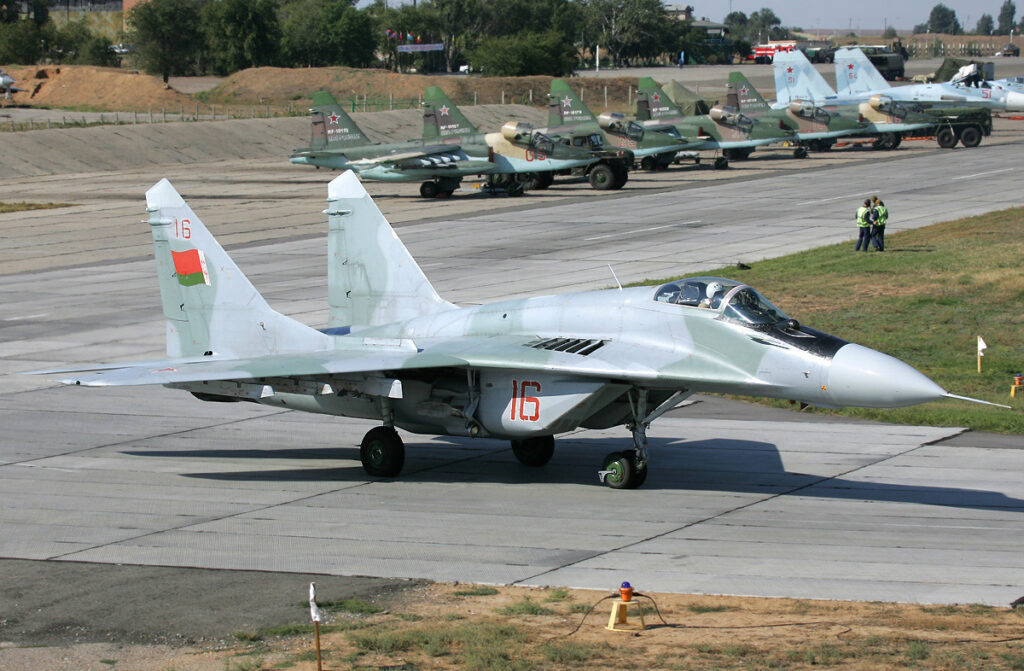
Belarus is reinforcing its border with Ukraine by deploying troops and air defence systems. Military and strategic impacts analysed.
On 19 August, Belarus reinforced its border with Ukraine by deploying military aircraft and air defence units. This move, justified by the Belarusian government as a response to an alleged Ukrainian military build-up, comes against a backdrop of heightened regional tensions. Belarusian commander Andrey Lukyanovich said the reinforcements, which included anti-aircraft missiles and troops specialising in radio engineering, would increase Belarus’s defensive capacity. However, the Ukrainian authorities dispute this version, claiming that no significant changes have been observed at the border.
Belarus’ recent decision to deploy military aircraft and air defence units to the Ukrainian border comes against a backdrop of heightened tensions between the two countries. This deployment, announced on 19 August, has raised concerns about a possible military escalation in the region. To fully understand the significance of this manoeuvre, it is necessary to analyse in detail Belarus’s military capabilities, the strategic motivations behind this reinforcement and the potential consequences for regional security.
Military deployment on the border: capabilities and objectives
Belarus’ deployment of air defence systems and aircraft on the Ukrainian border is a show of force. According to commander Andrey Lukyanovich, this reinforcement includes anti-aircraft missiles, such as the S-300 or S-400, as well as troops specialising in radio engineering, essential for detecting and neutralising airborne threats.
Belarus has between 60,000 and 63,000 troops, suggesting that up to 20,000 could be stationed near the Ukrainian border, given Lukashenka’s claim that a third of the army is deployed there. This manoeuvre is intended to strengthen deterrence and respond to what Minsk perceives as a potential danger emanating from Ukraine. However, it is crucial to note that this military response could also be an attempt by Belarus to solidify its relationship with Russia, its strategic ally.
The strategic motivations behind this deployment
Belarusian President Alexander Lukashenka justified the deployment by referring to a supposed concentration of Ukrainian troops near the border. However, this assertion is contradicted by the Ukrainian authorities, who have not observed any notable change in the disposition of the armed forces near the border.
This discrepancy between official statements and the facts on the ground can be explained by more complex strategic motivations. Belarus, under the influence of Russia, may be seeking to create a climate of tension that justifies an increase in Russian military involvement in the region. By increasing its military presence, Belarus could also be trying to divert attention from internal problems, such as political and economic unrest, by focusing public discourse on an external threat.

Military and strategic consequences for the region
The deployment of additional military forces on the Ukrainian border by Belarus could have several important consequences for the region. Firstly, it increases the risk of unintentional military incidents, which could quickly degenerate into armed confrontations. It could also prompt Ukraine to step up its military presence in the region, creating a spiral of militarisation that could further destabilise the region.
Furthermore, this deployment could complicate diplomatic relations between Ukraine, Belarus and Russia. Ukraine could see these movements as further proof of the complicity between Belarus and Russia, which could lead it to seek increased support from its Western allies, particularly within NATO. This situation could exacerbate tensions between Russia and the West, at a time when relations are already strained by the war in Ukraine.
Analysis of Belarusian military capabilities
To understand the potential impact of this deployment, it is essential to examine Belarus’ military capabilities. In terms of air defence, Belarus has advanced systems such as the S-300, capable of targeting aircraft and ballistic missiles from a distance of up to 150 kilometres. These systems are supported by a network of radars and electronic warfare units, which enhance the country’s ability to detect and respond rapidly to air threats.
The Belarusian air force, although less powerful than those of Russia or Ukraine, is equipped with MiG-29 and Su-30 fighters, which can be used for air defence and interdiction missions. By deploying these forces to the border, Belarus is strengthening its ability to monitor and control the airspace in this strategic area.
Consequences for regional security
Belarus’ increased military presence on the Ukrainian border could have far-reaching implications for regional security. By strengthening its air defence capabilities, Belarus could make any Ukrainian or allied attempts to conduct air operations close to the border more difficult. It could also complicate surveillance and reconnaissance efforts in the region, increasing tensions and the risk of misunderstandings.
Furthermore, this deployment could be interpreted as a provocation by Ukraine and its allies, leading to a military or diplomatic response that could further aggravate the situation. The increased military presence could also prompt other countries in the region to review their defence posture, which could lead to increased military spending and further militarisation of the region.
This development underlines the fragility of the security situation in Eastern Europe and the possibility of military escalation if tensions are not brought under control. The next steps, both on the Belarusian and Ukrainian sides, will be crucial in determining how this complex situation develops.
War Wings Daily is an independant magazine.